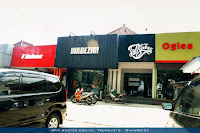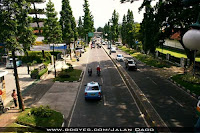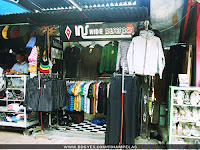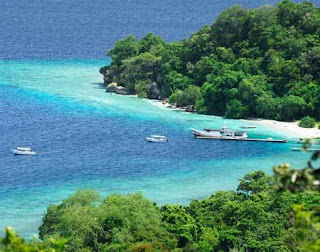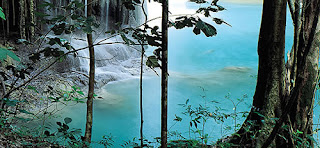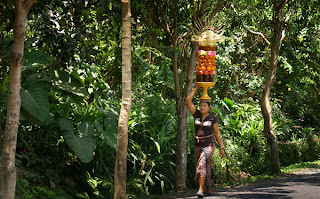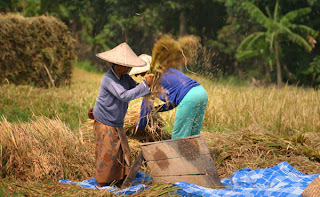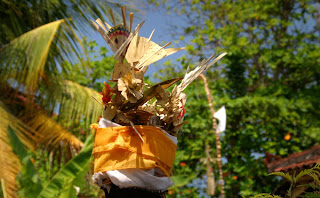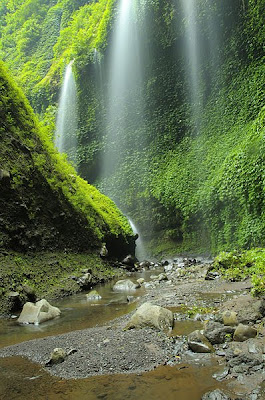Baris Dance – An Army Dance
Baris Dance – An Army Dance : Tari BarisBaris Dance comes from the word “bebaris“ meaning troops. The dance portrays the army soldiers and agility usually performed as a ritual dance. This dance performed by a group of men, usually numbering 8 to 40 dancers. Baris Dance has a lively movement and quite sturdy, straightforward, dynamic, and accompanied by Gong Kebyar and Gong Gede. Baris Dance is usually divided so 3 rounds. Namely the opening round, soft round, and the closing round. In the opening round is usually more aggressive movements, usual first imprest. Second round, the gong or the music will be softer, usually even more dignified movements. Closing round as same as the opening round. Baris dances are still in Bali, among others:
 * Baris Katekok Jago: dancer carrying a spear gun polet (spear black stems and white), using black and white striped dress.
* Baris Katekok Jago: dancer carrying a spear gun polet (spear black stems and white), using black and white striped dress.
* Baris Tumbak: dancer carrying a spear gun and using awiran dress in layers.
* Baris Dadap: dancers carrying Dadap weapons (like a shield), the movement is more gentle than other types of Baris dance. Dancers dance while singing a song barreled slendro.
* Baris Presi: dancers carrying kris weapons, and a kind of shield, called Presi.
* Baris Pendet: dancers bring offerings (canang sari).
* Baris Bajra: dancers carrying Bajra mace weapons (such as Bhima’s mace).
* Baris Tamiang: dancers carrying kris weapons and shields called Tamiang.
* Baris Kupu Kupu: dance depicts the life of a butterfly, the dancers wearing butterfly wings, agile and dynamic movements mimic the movements of a butterfly.
* Baris Bedil: a dancer with long-barreled imitation rifle made of wood.
* Baris China: dancing under the influence of Chinese culture, unique fashion look of the layout (long pants with a long-sleeved shirt, sarong sash, hat, sunglasses and wearing a sword weapon).
* Baris Cendekan: a dancer with a short spear gun (cendek).
* Baris Panah: dancers carrying arrows.
* Baris Jangkang: a dancer with a long spear gun.
* Baris Gayung: dancers are a group of Pemangku (figure of hindhu religious clergy) with a scoop or cantil (a tool to bring holy water).
* Baris Demang: dancing figures illustrate Demat (one of the characters Pagambuhan) in the classical Gambuh dance drama with a gun, sword, spear, arrows, and others.
* Baris Cerekuak: dance movements represent a group of water birds (cerekuak) while searching for her lover, bird Manuk Dewata.
* Baris Mamedi: describes a group dance spirit (mamedi) who lives in haunted places like the cemetery, the dancers wore clothes made of leaves and twigs are taken from the grave.
* Baris Ketujeng: dance describes a group of spirits who live in haunted places as the introduction of dance soul of the departed to heaven.
* Baris Gowak: dance depicts the battle between the forces Badeng Tegal (Badung) with a group of ravens carrying death.
* Baris Omang: dancers use a spear gun, but move slowly like the way a snail (Omang), describes the battle between the forces Badeng Tegal (Badung) with troops of Guwak (crow).
* Baris Jojor: dancers carrying Jojor weapons (spear, long-stemmed).
* Baris Kuning: dancers dressed all in yellow, and armed with kris and Tamiang (shield).
* Baris Tengklong: dancers carriying sword weapons, the movement is dynamic, powerful and approaching martial art movements.
* Baris Kelemet: dancers portray the fishermen, with such oar weapons, describing the boat in the sea to catch fish.


 1:45 AM
1:45 AM
 Santi Utami
, Posted in
Santi Utami
, Posted in

 Games jetski use of vehicles on the beach like a motorcycle. Jetski here can not you drive yourself, should be accompanied by an instructor, given at Tanjung Benoa beach there are many boats and other watersport activities, so that collisions can be avoided. Do not worry, the instructor will only drive from the beach toward the middle of the sea, well until you turn there who do drive, the instructor lift. When the game is 15 minutes. If you want exciting ride, try the actions of waves imaginable .. then you will feel the sensation of driving pleasure ini.Menarik jetski is not it?
Games jetski use of vehicles on the beach like a motorcycle. Jetski here can not you drive yourself, should be accompanied by an instructor, given at Tanjung Benoa beach there are many boats and other watersport activities, so that collisions can be avoided. Do not worry, the instructor will only drive from the beach toward the middle of the sea, well until you turn there who do drive, the instructor lift. When the game is 15 minutes. If you want exciting ride, try the actions of waves imaginable .. then you will feel the sensation of driving pleasure ini.Menarik jetski is not it?
 Banana Boat uses a single raft, you will be attracted by speed boat around the coast within 15 minutes. Banana boat load capacity is max 4 people plus 1 instructor as a companion. You can ask diceburin into the water during the boat running, or if you do not want to wet .. ask who was perfectly normal. Less exciting does that play banana boat without nyebur
Banana Boat uses a single raft, you will be attracted by speed boat around the coast within 15 minutes. Banana boat load capacity is max 4 people plus 1 instructor as a companion. You can ask diceburin into the water during the boat running, or if you do not want to wet .. ask who was perfectly normal. Less exciting does that play banana boat without nyebur

